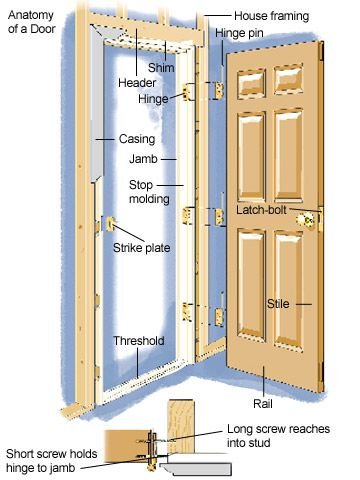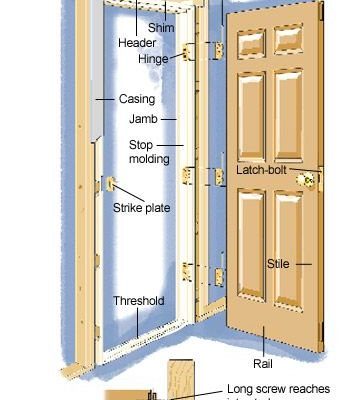
If you’re staring at your door trying to remember the last time it worked right, you’re not alone. A lot can go wrong with door hardware after construction nearby—sometimes the fixes are simple, and sometimes you need a closer look. Let’s walk through why these problems crop up and, more importantly, how to get your doors back in working order without losing your cool.
Why Door Hardware Fails After Construction Shakes Up Your Area
Here’s the thing: Most people don’t realize that nearby construction can mess with your building—even if you never see a crack in the wall. Construction equipment, digging, and heavy trucks can shake the ground just enough to cause subtle shifts in your property. Picture your house as a Jenga tower: even a small nudge can throw one piece out of alignment.
These little shakes can misalign doors, frames, and the hardware that holds everything together. If you have a brand-name lockset like Schlage or Kwikset, it’s built to be sturdy, but it’s not immune to the laws of physics. The movement might not seem dramatic, but it can be enough to make a latch miss its strike plate, leave a deadbolt stubborn, or cause a handle to go loose just from daily use.
It’s not just the ground shaking, either. Dust and grit kicked up by construction will find their way into every crack and crevice—yes, even inside your doorknob. That can clog up the works and jam internal mechanisms, especially if your hardware is older or a bit neglected.
Common Door Hardware Problems After Construction
Let me explain what usually goes sideways. Honestly, it’s an odd mix of issues, but most fall into three big buckets:
- Sticky Doors: Suddenly, a door that opened with a fingertip now needs a shoulder shove. This almost always comes down to alignment. When frames shift even a few millimeters, the door rubs against the jamb or the latch misfires.
- Lock Jams: This is a classic. You turn your key or thumbturn and—nothing. The bolt doesn’t slide, or it catches before it fully extends. This could mean your door moved enough that the bolt can’t find its hole, or grit is clogging the works.
- Loose Handles or Knobs: Knobs and levers might wiggle or spin in your hand. This usually means either screws have worked loose from vibration or internal parts have worn faster than usual, sometimes thanks to construction dust eating away at lubricants.
You might be wondering: Is this just bad luck or bad hardware? Not necessarily. Even premium brands are built for standard use, not for literal earthquakes or weeks of heavy pounding nearby. That’s why construction zones can set off a chain reaction of door problems.
How Shifting Foundations and Door Alignment Go Together
After nearby construction, one of the sneakiest culprits is your building’s foundation. Sounds dramatic, but here’s why it matters. Heavy machinery can cause vibrations that settle your house a fraction of an inch. It’s almost impossible to spot unless you look at how your door fits in its frame.
Let’s say you have a Mortise Lock or a multi-point locking system common on higher-end doors. The tolerances are tight: just a hair out of alignment, and suddenly the latch scrapes or the deadbolt won’t engage. Sometimes you’ll see the top or bottom of the door rub, but more often, you’ll feel it—extra pressure to close, new drafts, or the sound of wood scraping.
Check your thresholds and weatherstripping. If they look warped or compressed, that’s a sign your door is fighting the frame. You may also notice light peeking around the door edges that wasn’t there before. That’s your frame shifting ever so slightly.
Insight: Even if your door closes, a shifted frame puts constant pressure on lock parts. Over time, this makes keys stick, handles fail to retract latches, and deadbolts become unreliable.
Diagnosing and Troubleshooting Door Hardware Issues
Okay, let’s get hands-on. Before you break out the WD-40 or call a locksmith, do some basic troubleshooting. This saves time and helps you figure out if you’re facing a simple fix or something bigger.
- Visual Check: Open and close the door slowly. Look for points of contact or rubbing. Is the latch hitting the strike plate center, or is it off high or low?
- Handle and Lock Test: Turn handles and test locks with the door both open and closed. If the hardware works fine when the door is open but jams when closed, it’s almost always an alignment issue.
- Check Screws and Plates: Grab a screwdriver and gently tighten any loose handle or lock screws. Vibrations from construction can work them loose surprisingly fast.
- Look for Dust and Debris: Shine a light inside the keyhole and latch. If you see dust, use a can of compressed air to clear it out—never use oil on modern lock cylinders, as it attracts more grit.
If you’re using an electronic or smart lock, don’t forget to check the battery or code settings. Sometimes power issues show up at the worst times, but they can also hide hardware alignment problems.
When (and How) to Adjust or Repair Door Hardware
If you’ve checked alignment and the door is just a bit off, you can often make simple adjustments yourself. Here’s what usually works:
- Realign the Strike Plate: If the latch isn’t connecting smoothly with the strike, loosen the screws, move the plate up, down, or sideways a smidge, and retighten. Sometimes enlarging the hole in the jamb helps, too.
- Tighten Loose Hardware: Go over all visible screws on handles, faceplates, and hinges. Just a quarter turn on a Phillips-head can stop a loose knob or lever from spinning.
- Adjust Hinges: If the door is sagging, add or remove a hinge shim to tweak the alignment. This is pretty cheap (plastic shims cost a couple bucks) and can lift a low-hanging door back into place.
- Clean Inside the Mechanism: For dusty locks, remove the handle or knob if possible (most have a set screw). Blow out any grit, and reinstall. Avoid spraying oil inside unless the manufacturer specifically recommends it.
There’s no shame in calling in a professional, especially if a lockset like a Schlage Connect, August Smart Lock, or a mortise setup is acting up after construction. A locksmith can check the alignment, reset the remote code, or even re-sync an electronic system if needed. Sometimes, the fix is just beyond basic DIY—but at least you’ll know what’s going on.
What About Electronic Locks and Remotes?
Now, if you use keypad locks, smart locks, or remote-controlled door openers (think garage or entry doors), construction dust and vibration can cause their own set of weird problems. Here’s what might show up:
- Lost Sync or Code Errors: Sometimes, power disruptions or subtle jostling can cause your lock to forget codes or lose pairing with remotes. This mostly applies to WiFi or Bluetooth models.
- Battery Drains: A loose connection from vibration might drain batteries faster. If your lock acts up right after construction, try a fresh battery before deeper troubleshooting.
- Remote Communication Issues: If your remote won’t pair, first reset it according to the brand manual (often a small button on the interior panel). Re-sync with the main unit if needed.
If you’re using something like a Chamberlain remote for your garage, check if the signal is reaching the receiver cleanly—nearby construction equipment might have caused interference, but more often, it’s just a battery or alignment issue.
Tip: Always have your lock’s programming code handy. After construction, you might need to reset the device, especially if dust or vibration scrambled the settings.
How to Prevent Future Door Hardware Problems
Here’s the part most people skip: prevention. I can’t promise construction won’t shake things up again, but there are a few ways to keep your doors in shape:
- Regularly Inspect Hardware: Set a calendar reminder to check all doors, latches, and locks a couple of times a year—especially after big projects nearby.
- Keep It Clean: Wipe down hardware and blow out dust from keyways and moving parts. Don’t wait until you feel grit grinding away every time you lock up.
- Tighten Loose Parts: Always check screws on hinges, handles, and strike plates. A little maintenance goes a long way toward preventing vibration damage.
- Consider Upgrades: If your area faces regular construction, you might look at commercial-grade doors or hardware brands designed for heavy use, especially on entry points.
For electronic locks or remotes, check batteries, update firmware, and save your backup codes somewhere safe. If you use smart features, make sure your devices don’t lose WiFi connection during power blips.
When to Call for Help: Signs You Need a Locksmith
Sometimes, no amount of troubleshooting gets you back to square one. Here’s when it’s time to bring in a pro:
- Repeated Lockouts: If your key or code works some days and not others, you might have a warped frame or deeper alignment issue only a pro can correct.
- Full Hardware Failure: When a handle won’t budge, a deadbolt won’t move, or your electronic lock refuses to reset, it’s safer to call a locksmith. For forced entries or stuck emergency exits, never delay.
- Security Concerns: If you’re worried the construction caused more damage (cracks in the jamb, visible door gaps, etc.), get an inspection. Your peace of mind is worth the cost.
Most locksmiths can handle everything from basic hardware resets to smart lock code troubleshooting. If your building shares walls with the construction site, ask about long-term repairs or reinforcement.
Bringing Your Doors Back to Normal
Living next to a construction project can make your own front door feel like a moving target. But most post-construction door hardware issues are fixable with a little patience—sometimes just a screwdriver and a flashlight, sometimes with a pro’s help. Whether you trust a classic Schlage or prefer a high-tech remote system, don’t panic when things seem “off” right after construction shakes up your world.
Check the alignment, clean out the dust, and re-sync your remotes if you need to. Keep an eye on your frames, stay on top of maintenance, and don’t be afraid to call in a locksmith when things go sideways. When your doors close smoothly and your locks snap into place, you’ll know you’ve put the disruption behind you—until you spot the next crane on your street, anyway.
